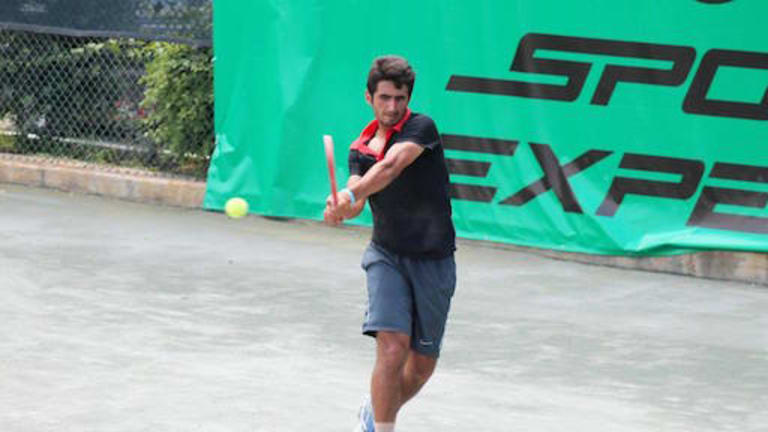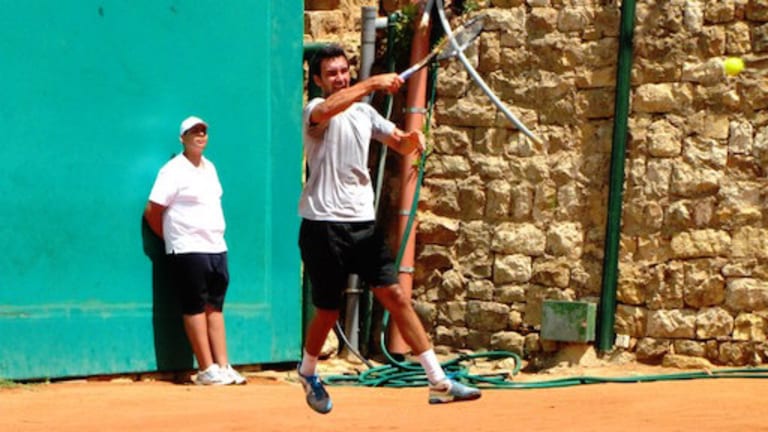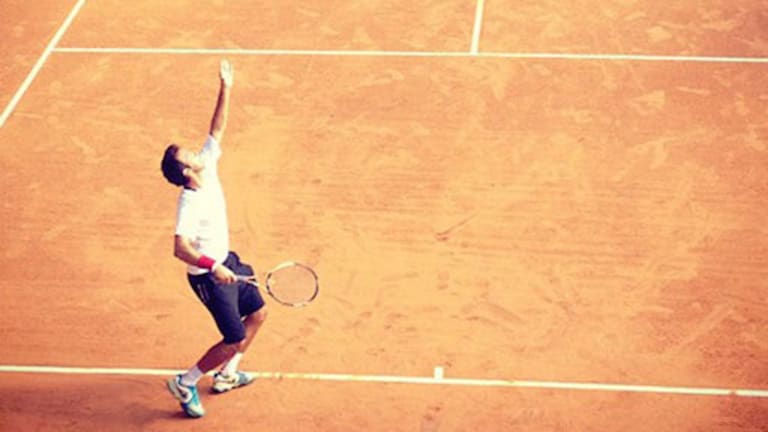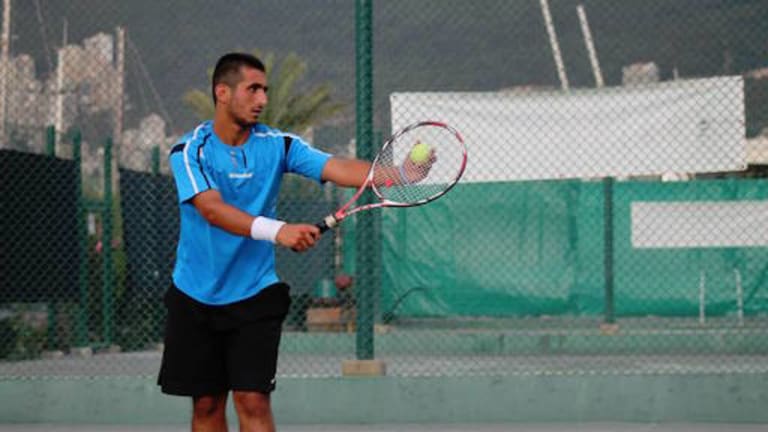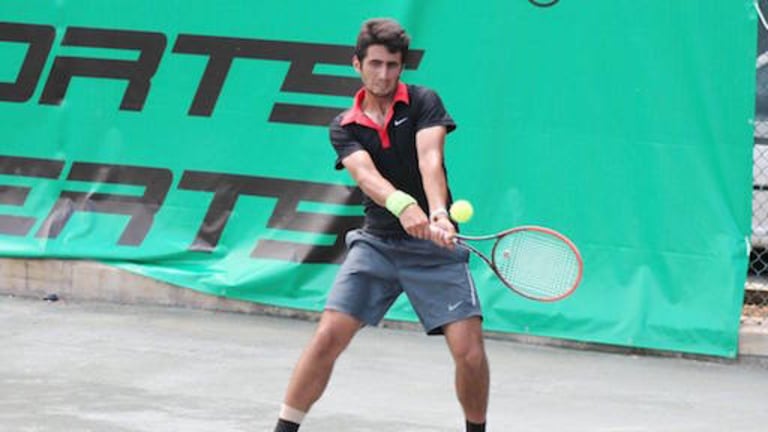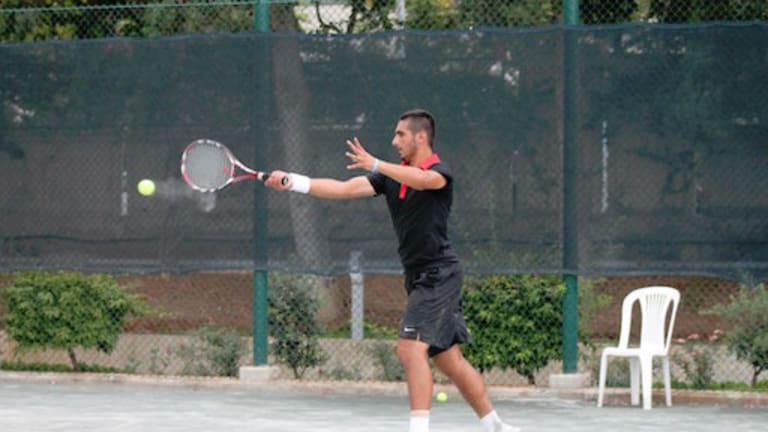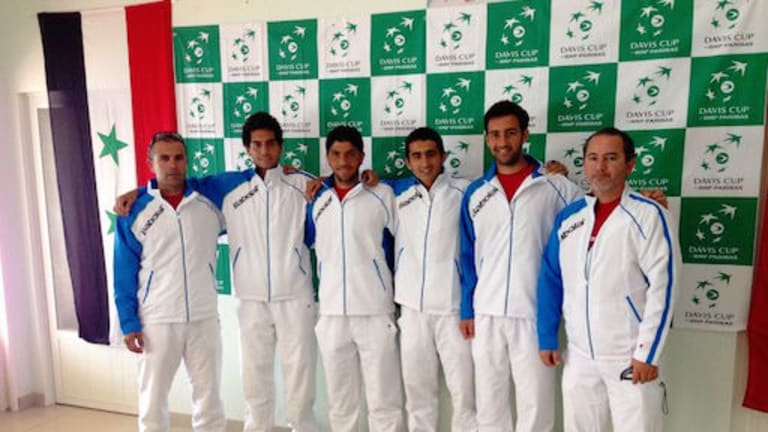Editor's Note: All images are courtesy of Amer Naow and Marc Abdelnour.
In central Aleppo, a short drive from the ancient citadel—one of the oldest medieval fortresses in the world—lies the Al-Hamadaniah Tennis Complex. Part of a once-grand sports city, it was opened in 2008 as a hallmark of Syria’s desire to grow as a sporting nation. Now, like the citadel which had stood firm for five millennia, much of it has been razed to the ground, relics of three years of continuous civil war.
The indoor tennis stadium was one of Aleppo’s proudest sporting facilities and a training hub for the Syrian national team. Last year a stray bomb, launched by militants in the direction of the nearby Syrian army base, landed on the roof and reduced it to rubble. Bomb holes form an odd patchwork of craters across the once gleaming courts.
It seems almost inconceivable now, but in 2009 Aleppo hosted Davis Cup tennis, welcoming Iran, Saudi Arabia, Sri Lanka, Lebanon and the Pacific island nations for a week-long bonanza of clashes in Group III of the Asia/Oceania Zone, the fourth division of the sport’s largest international team competition.
Now, relentless shelling has turned much of this ancient city into a dusty graveyard. For Amer Naow, the third-highest ranked Syrian tennis player, the memories of that week are a poignant reminder of what once was, and perhaps what might yet be.
“I was in the ninth grade at the time,” the 21-year-old remembers. “The ninth grade is very important in Syria. You have to study too much! And I had an exam period. But I ran away every day to the courts to support the team. My mum and dad would shout at me when I returned, but I wanted to support.”
A wide-eyed teenager, Naow’s imagination was captured by the patriotism that only Davis Cup generates, even at the sport's lower levels. Resounding wins over Saudi Arabia, Iran and Lebanon put Syria in contention for promotion to Group II before a 3-0 playoff defeat to Sri Lanka.
“I still tell my dad that we didn’t make it, as he prevented me from going to watch the match,” he smiles. “I wasn’t there, as I finally forced [myself] to go and study. Even though it was 3-0, all the matches were very close and I remind him to this day that I was important for the team! Sport is all about routine. You have to do it every day, and I wasn’t there. But these are beautiful memories for me, especially now.”
Nearly seven years later, Syria still raises a team each year to compete in the Davis Cup. It comprises of Naow, brothers Marc and Bruno Abdelnour and Kareem Allaf. All learned the game on Aleppo’s now-ruined courts. But these days, the ties take place far from Syria. And one by one, each player has abandoned the country of his birth in pursuit of education, work and safety.
